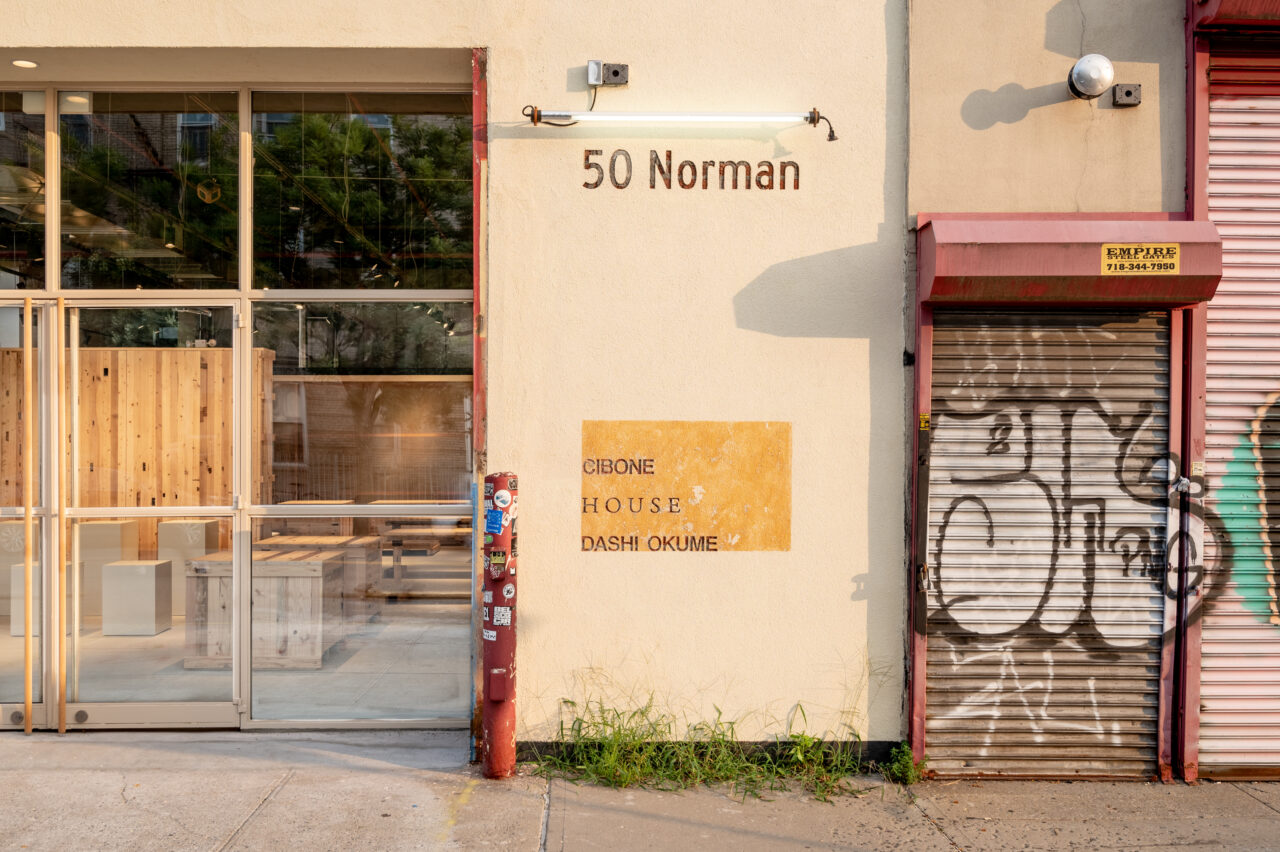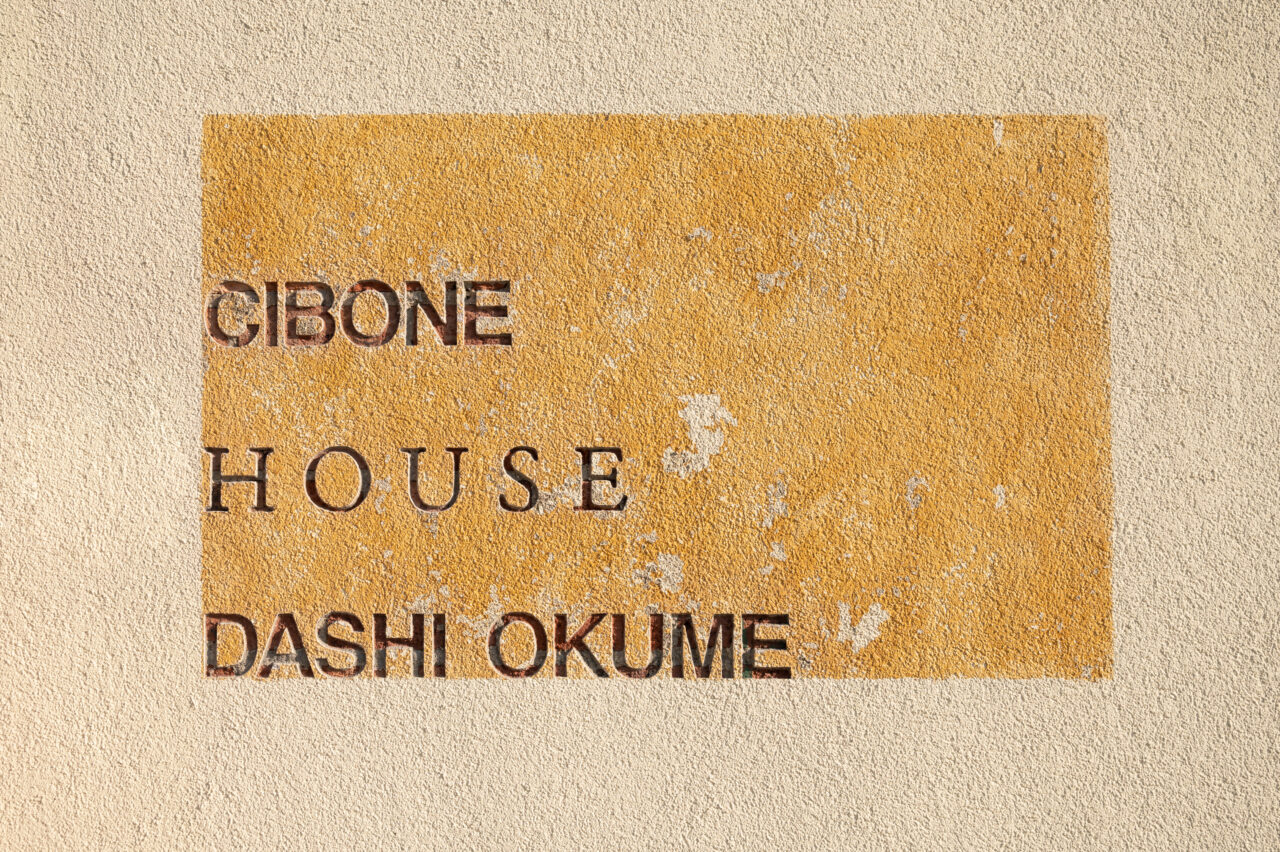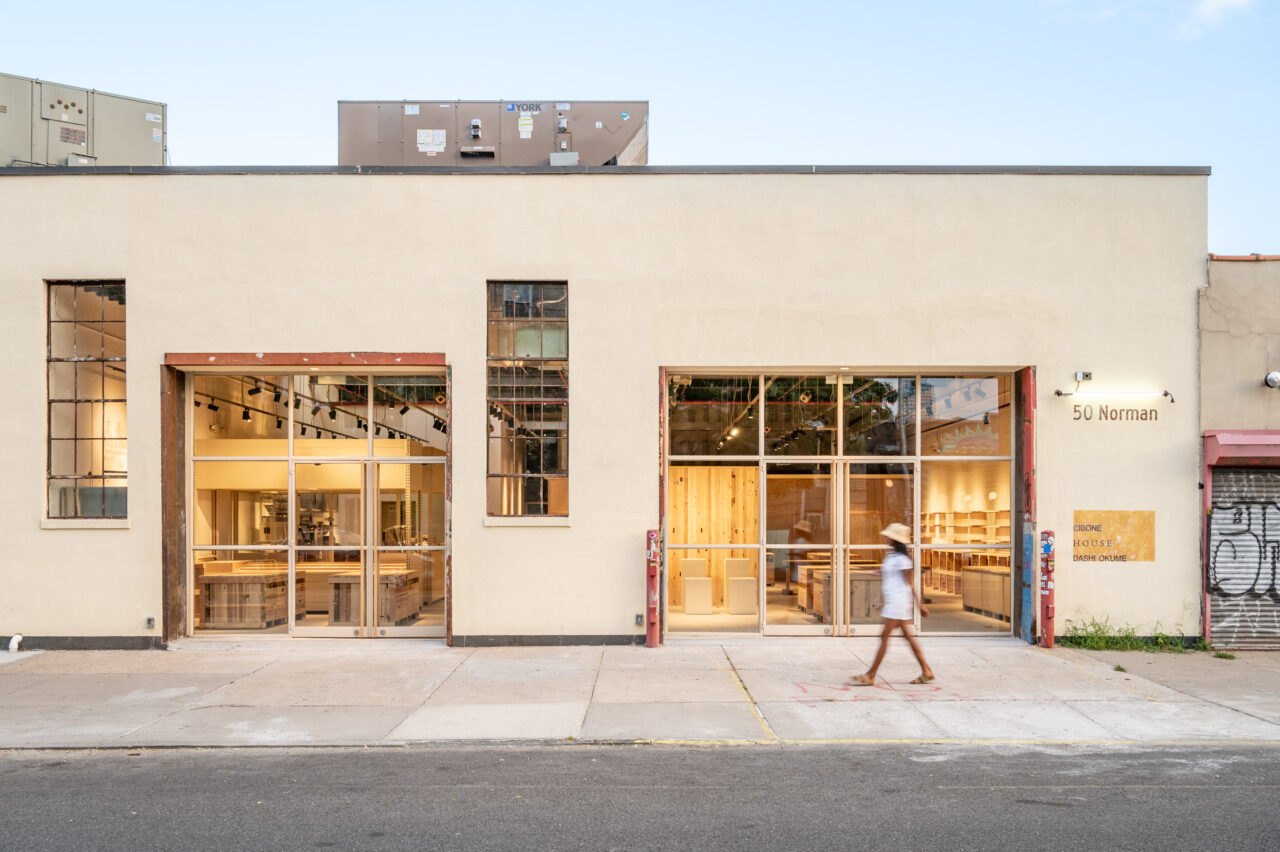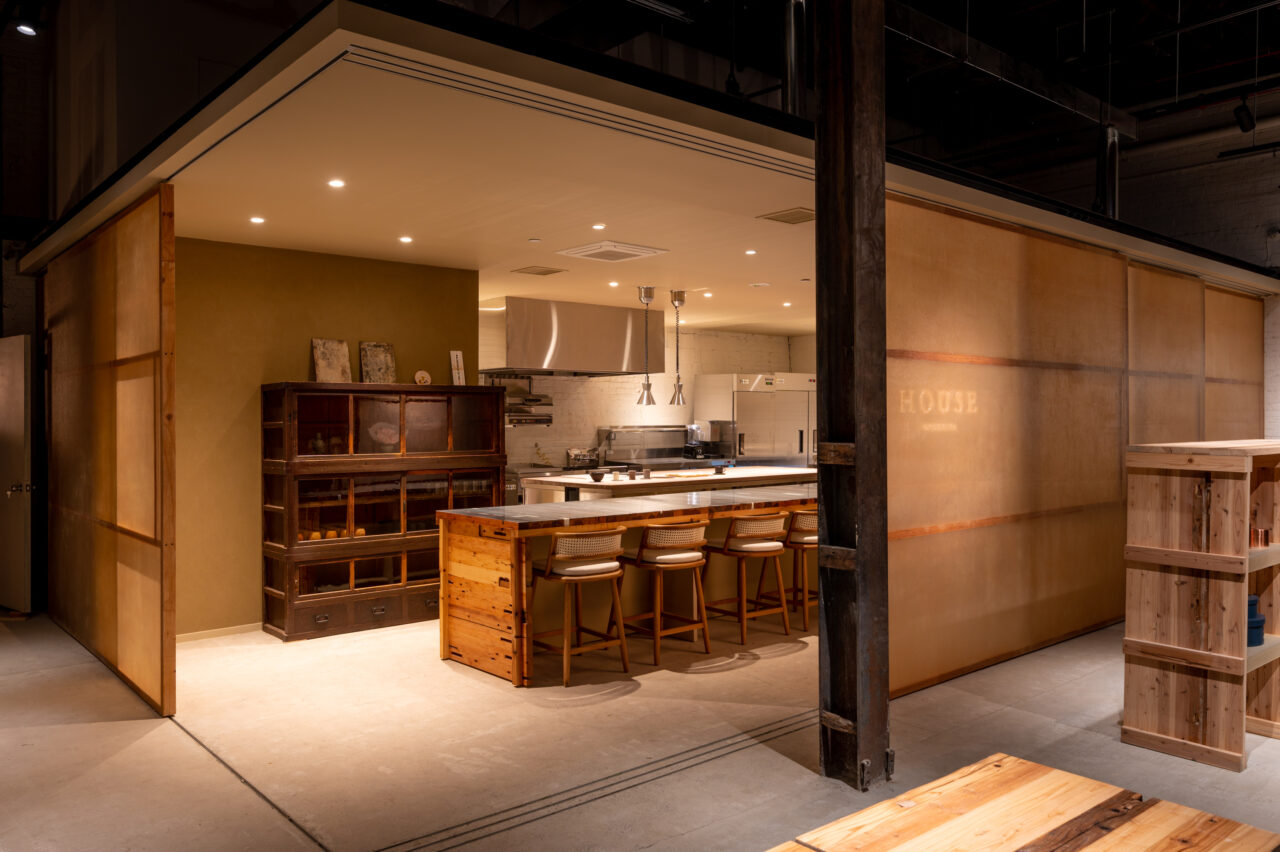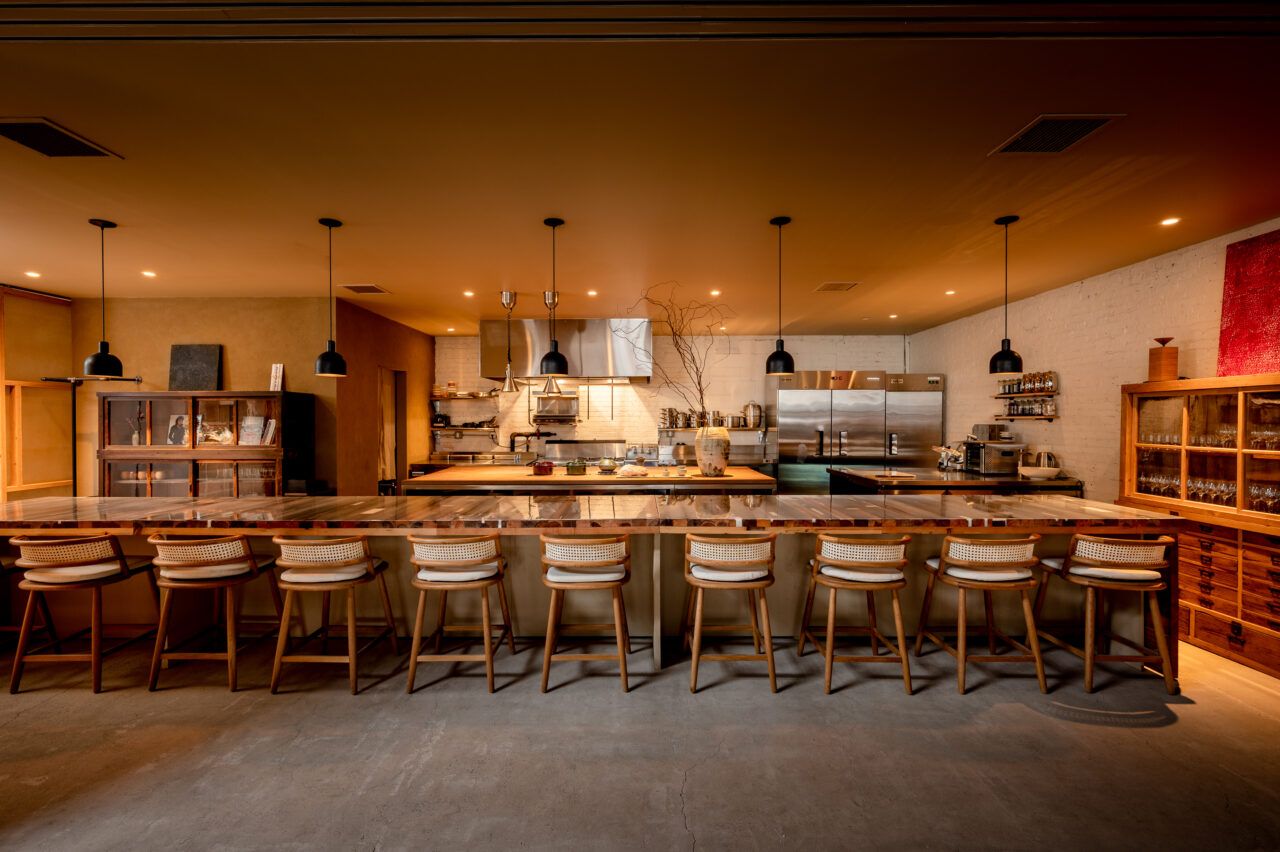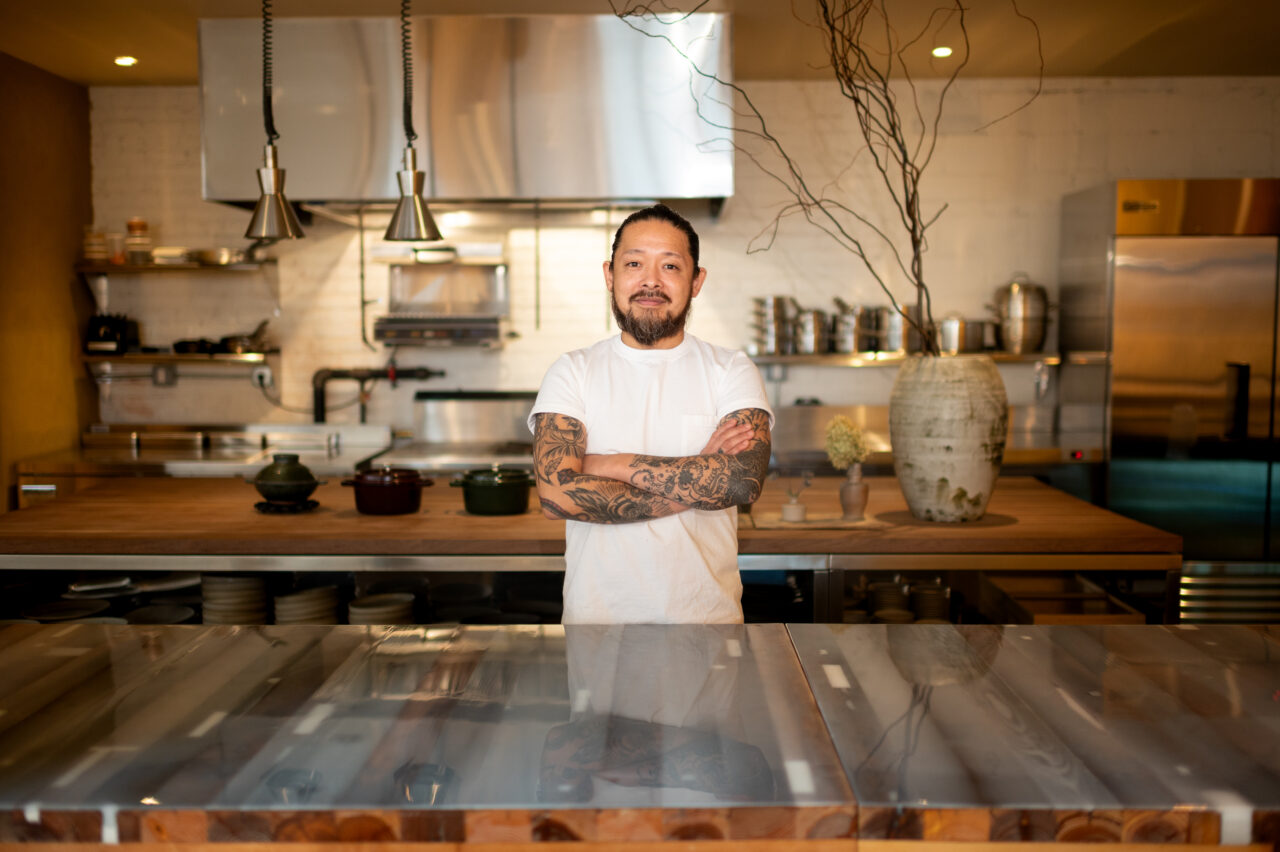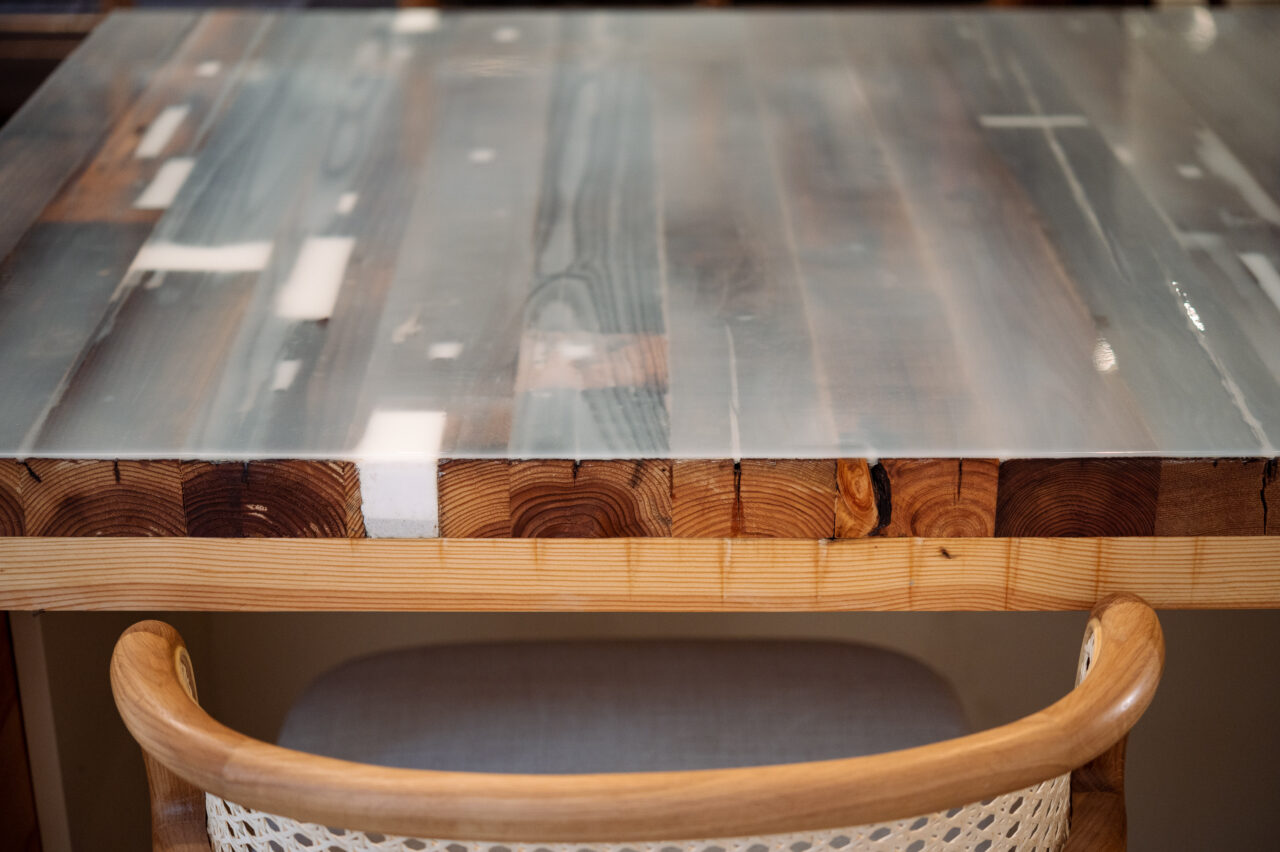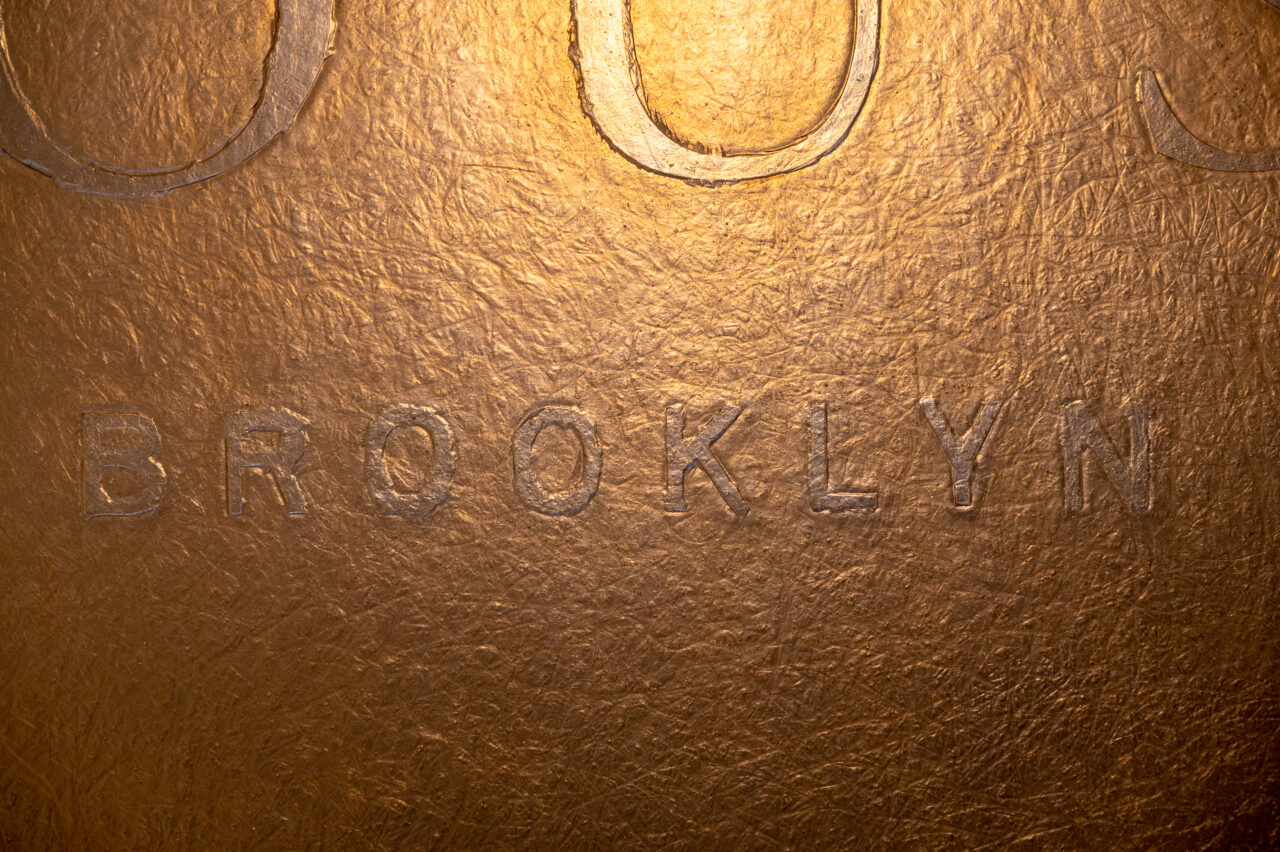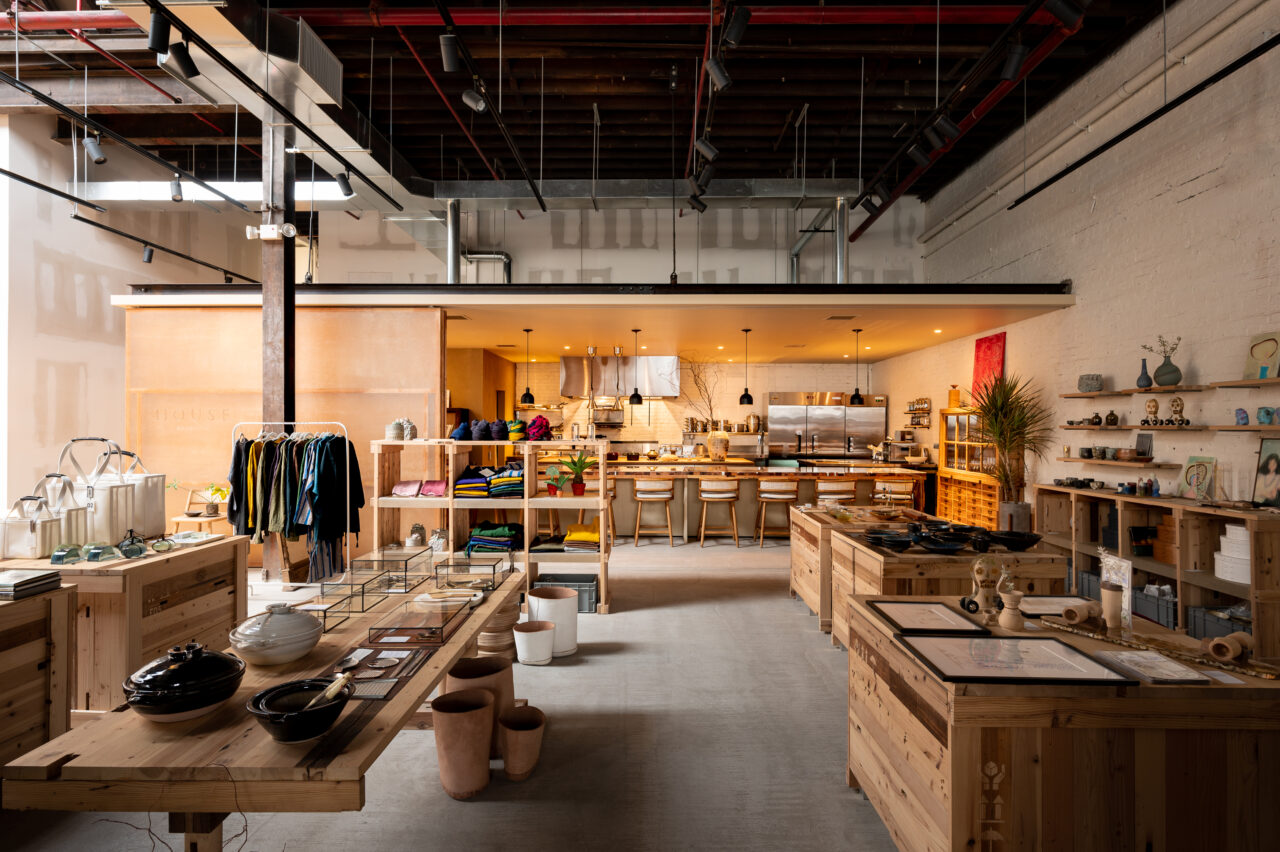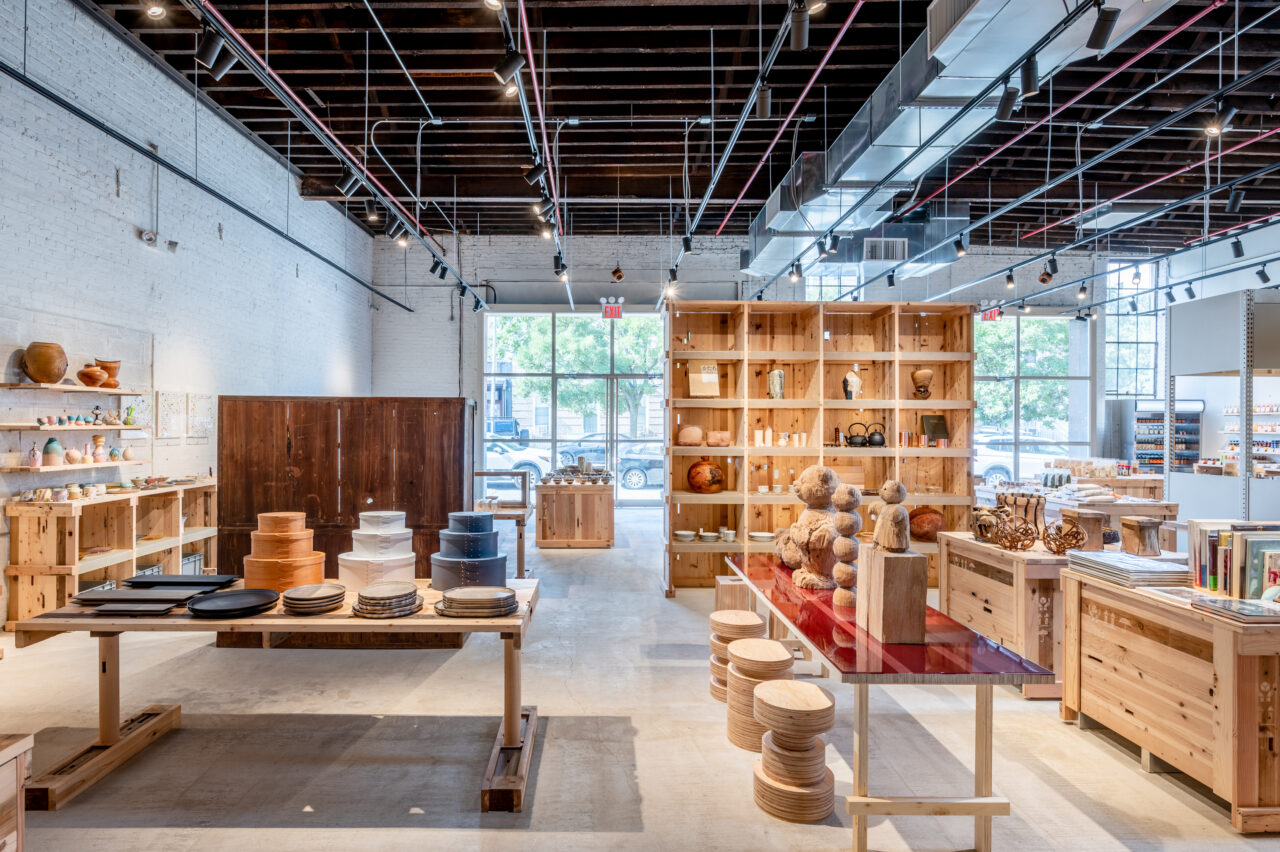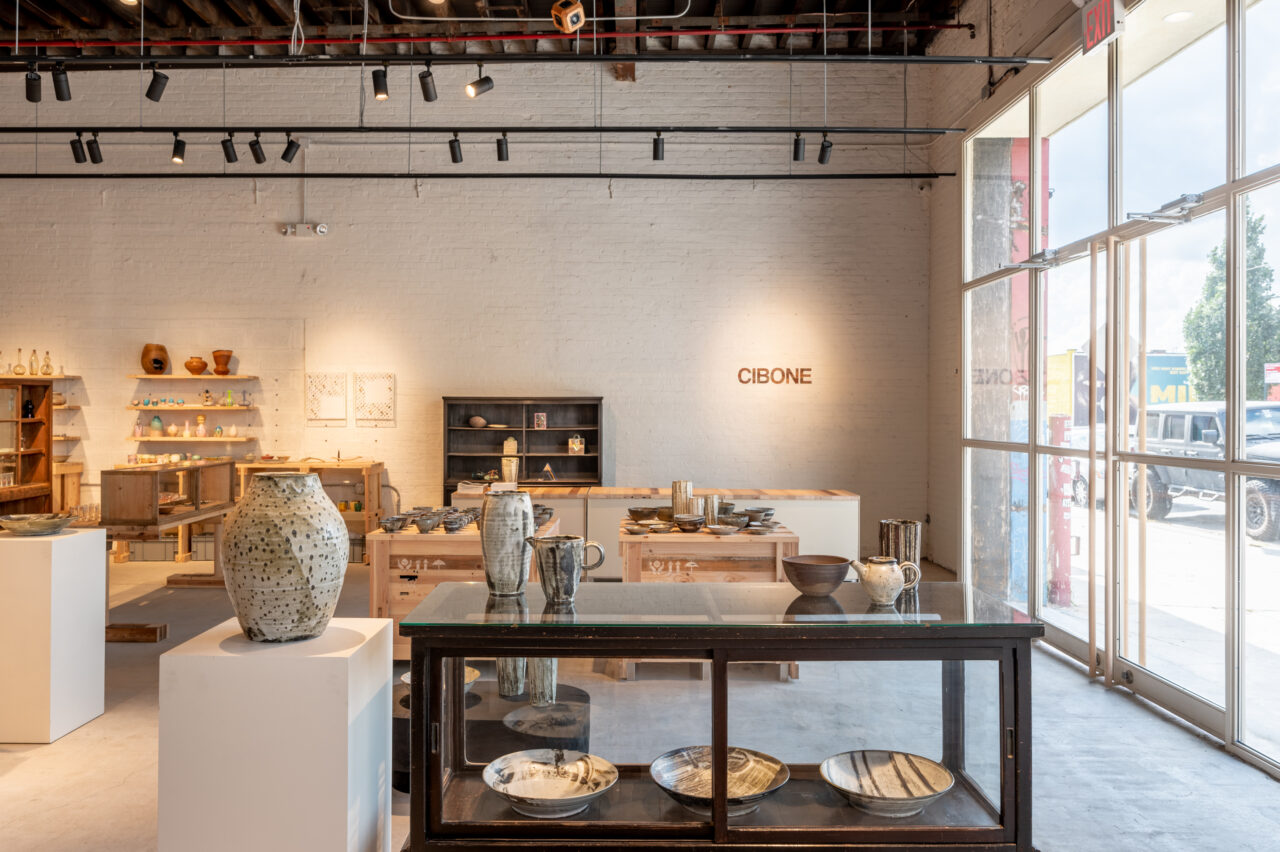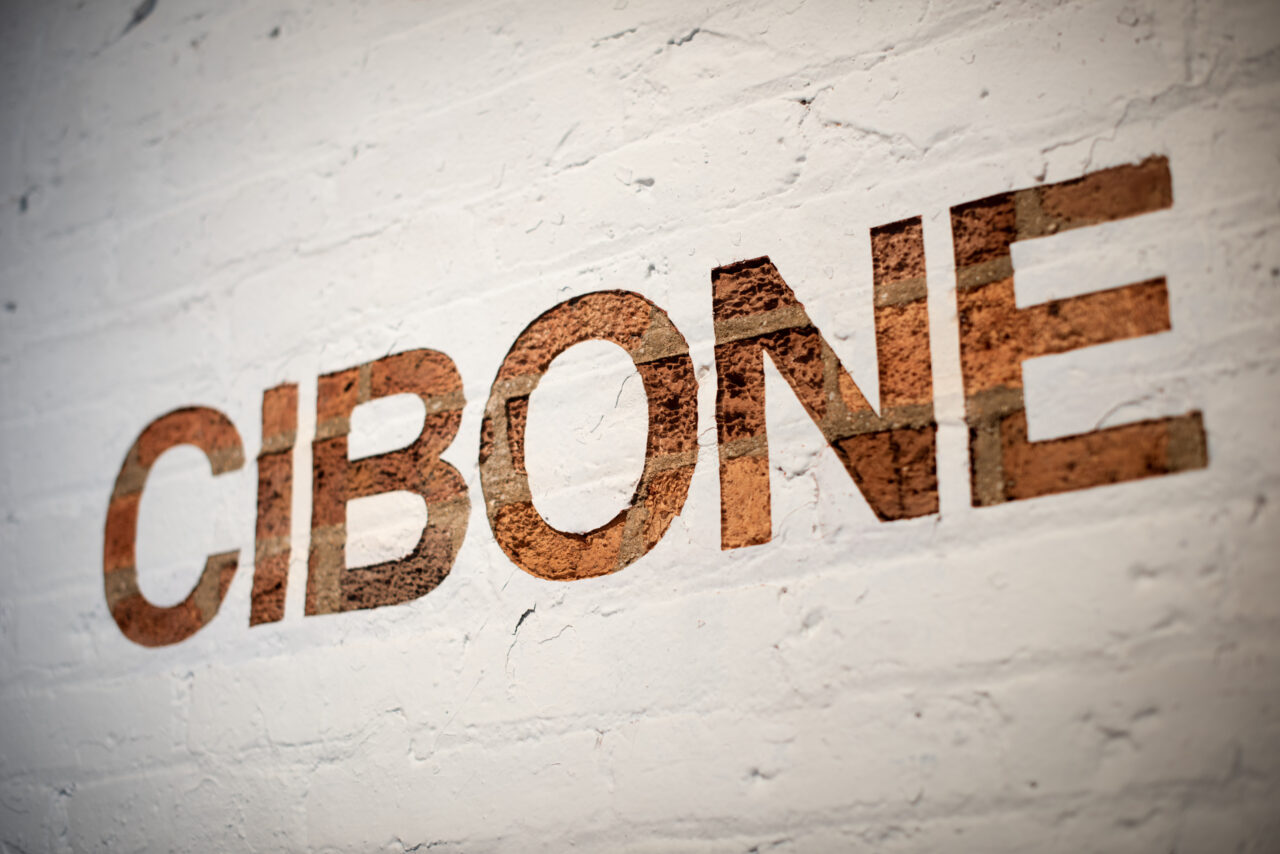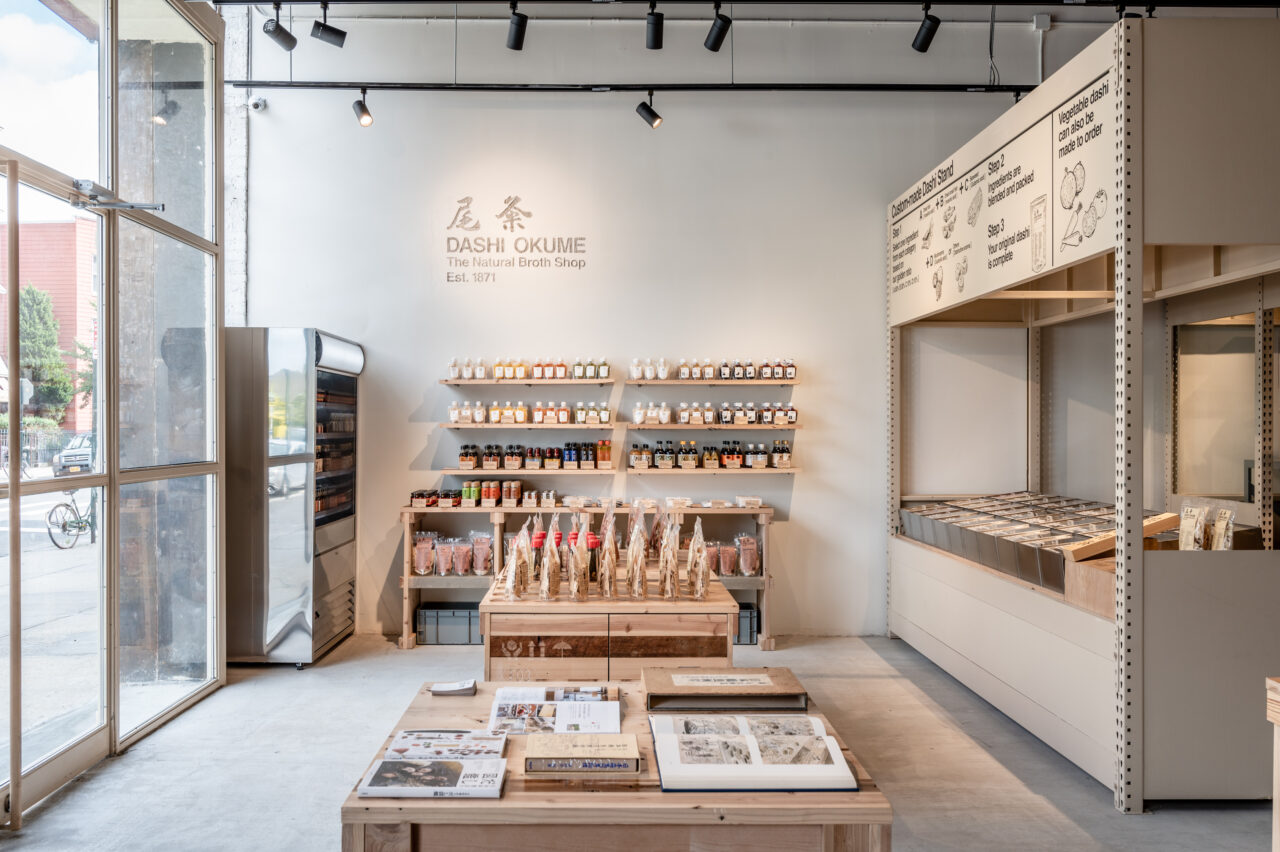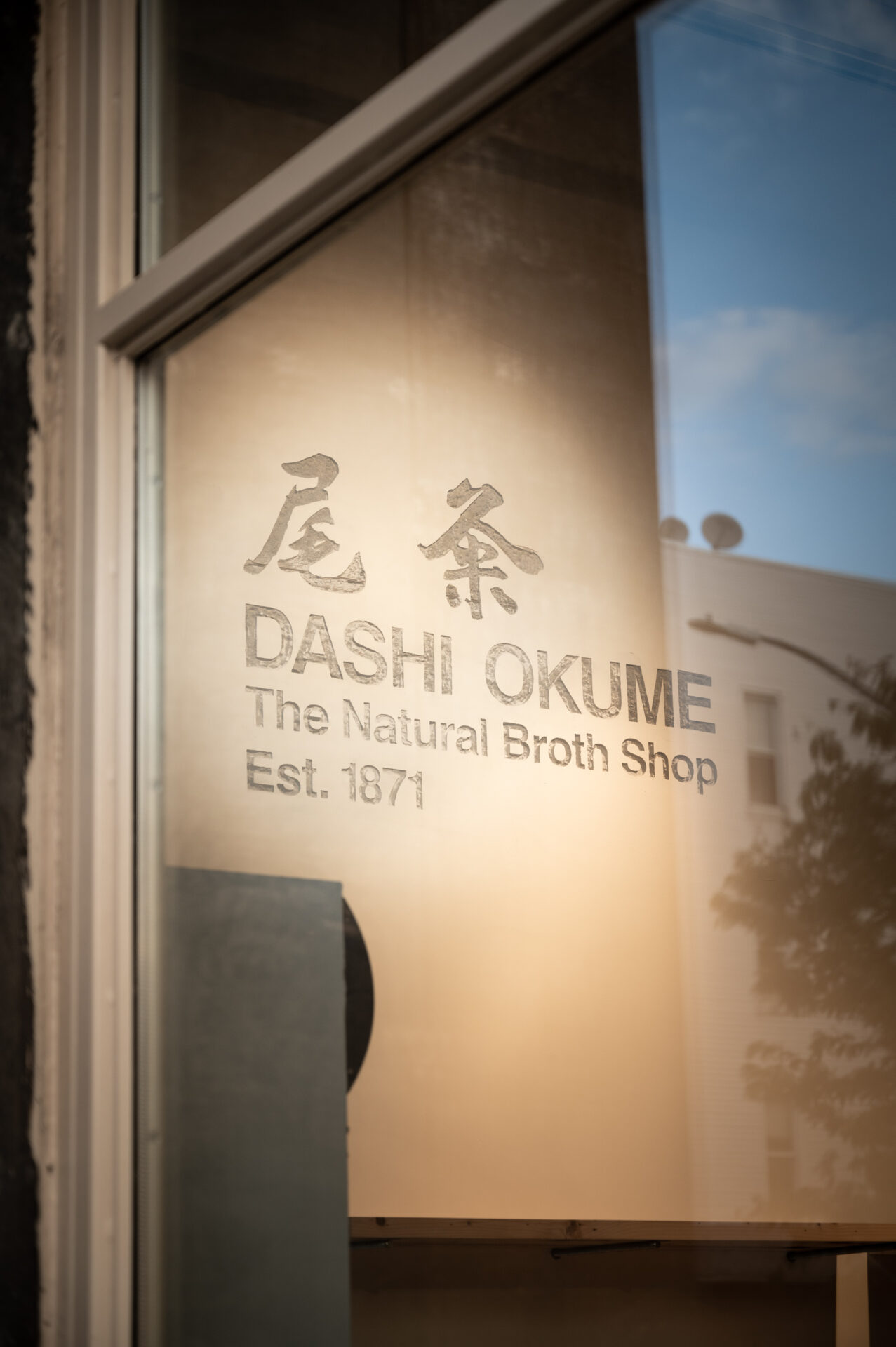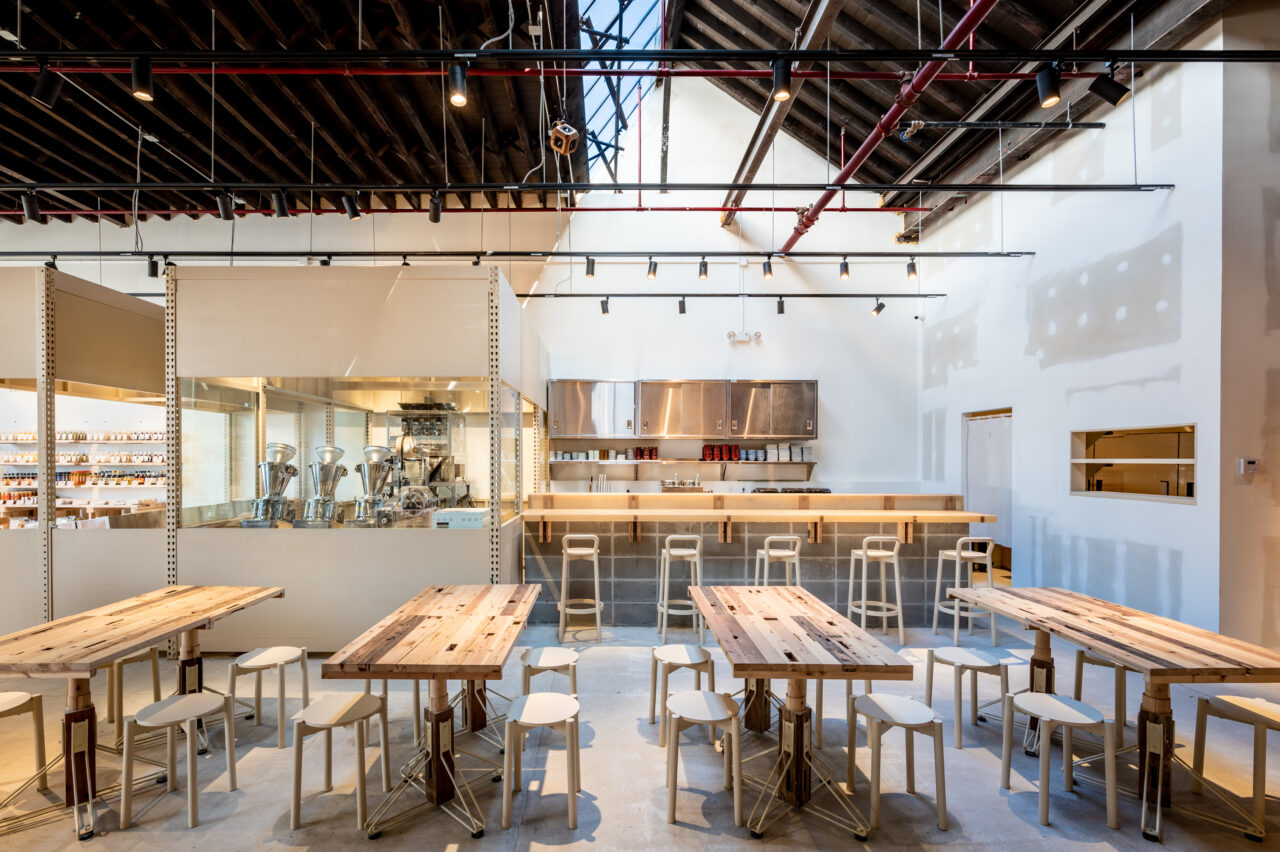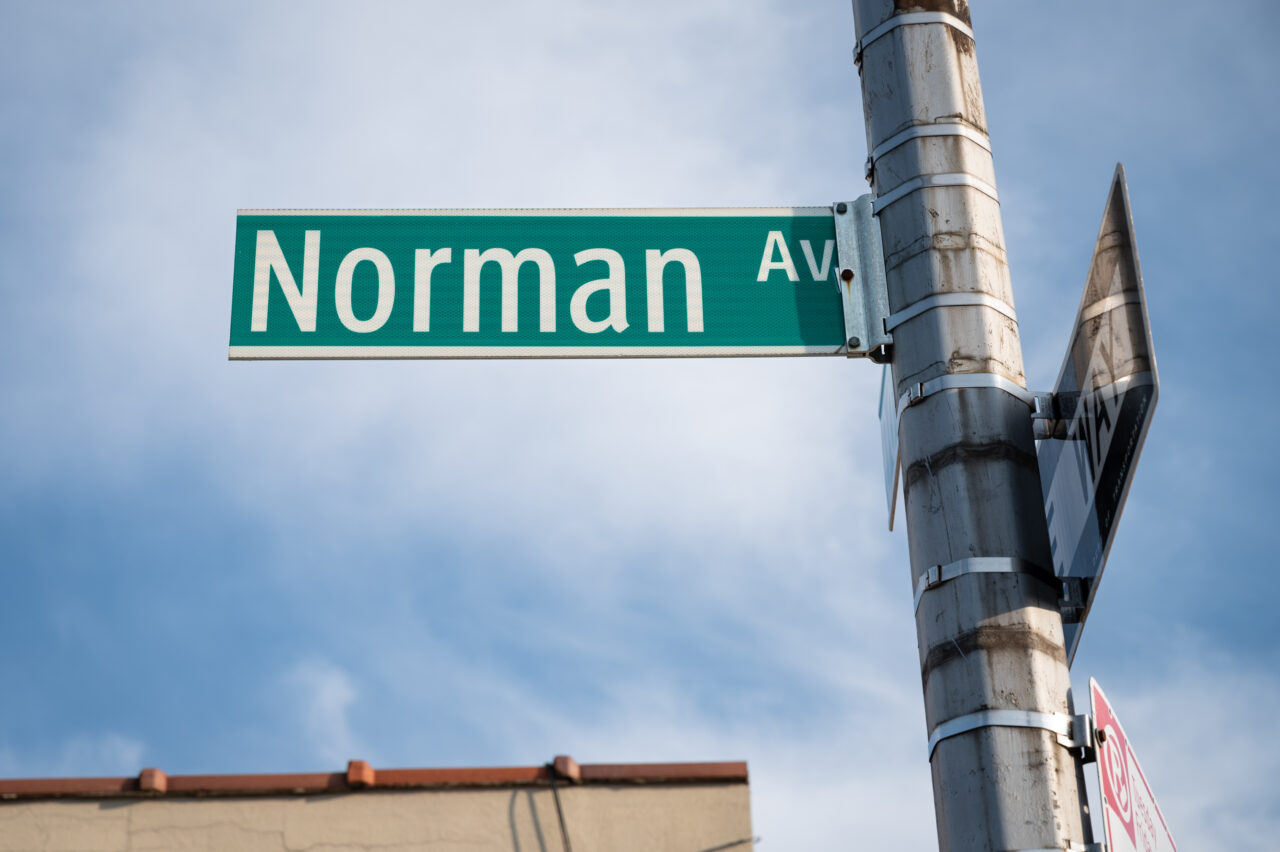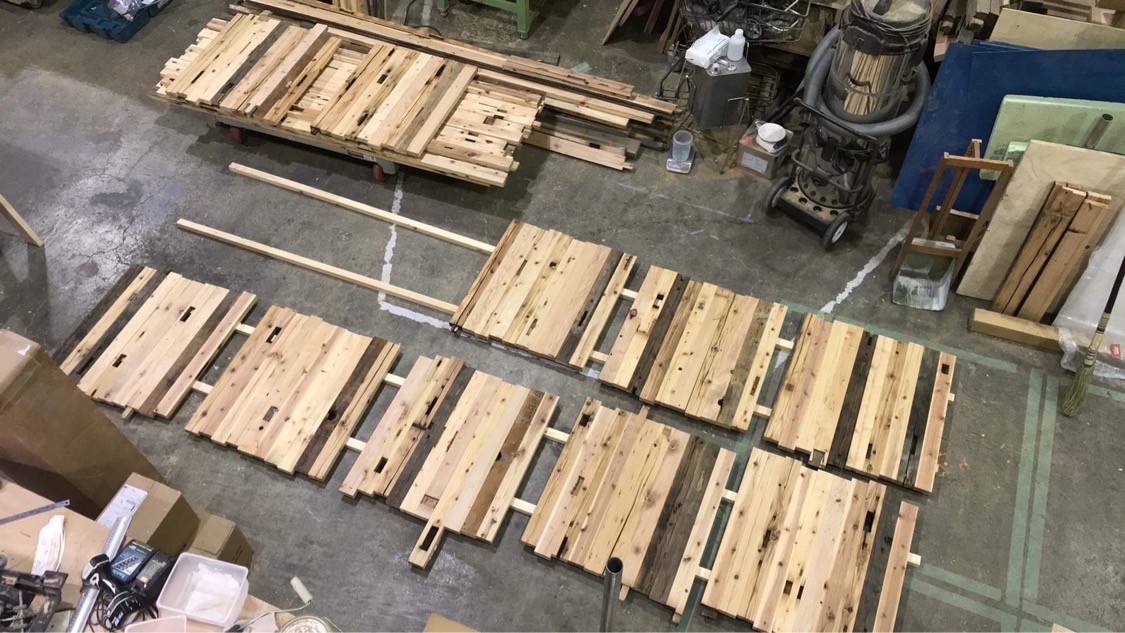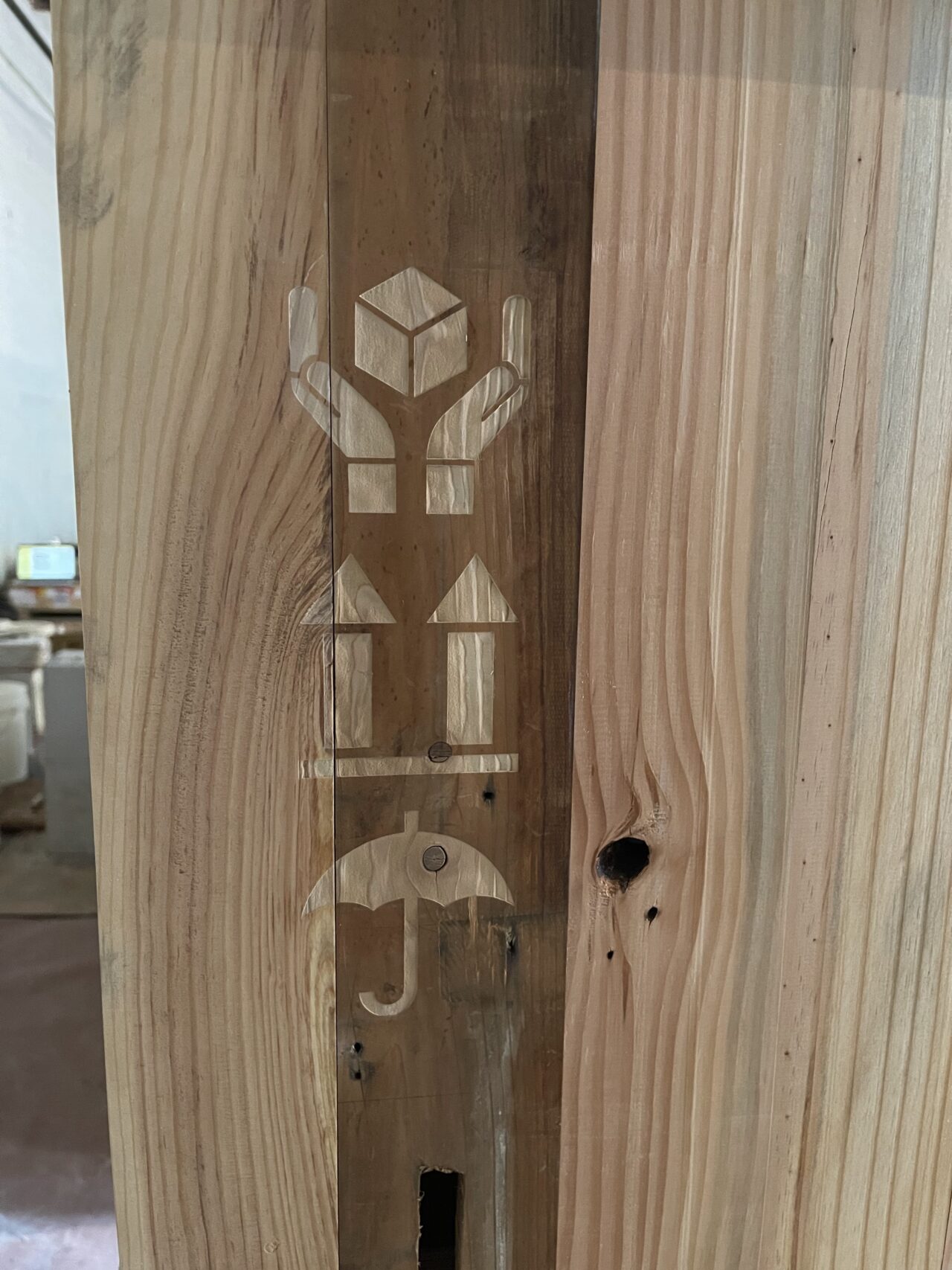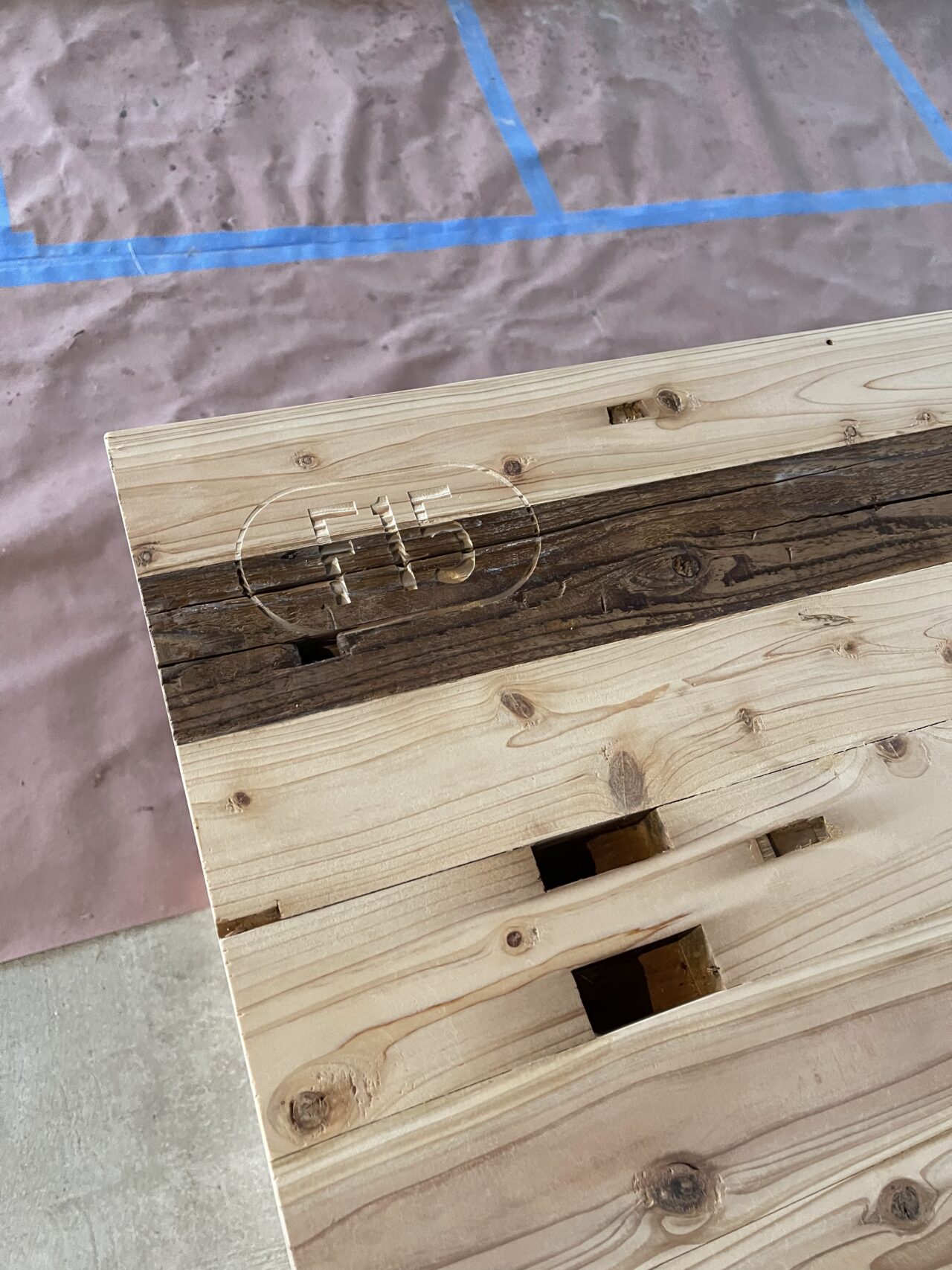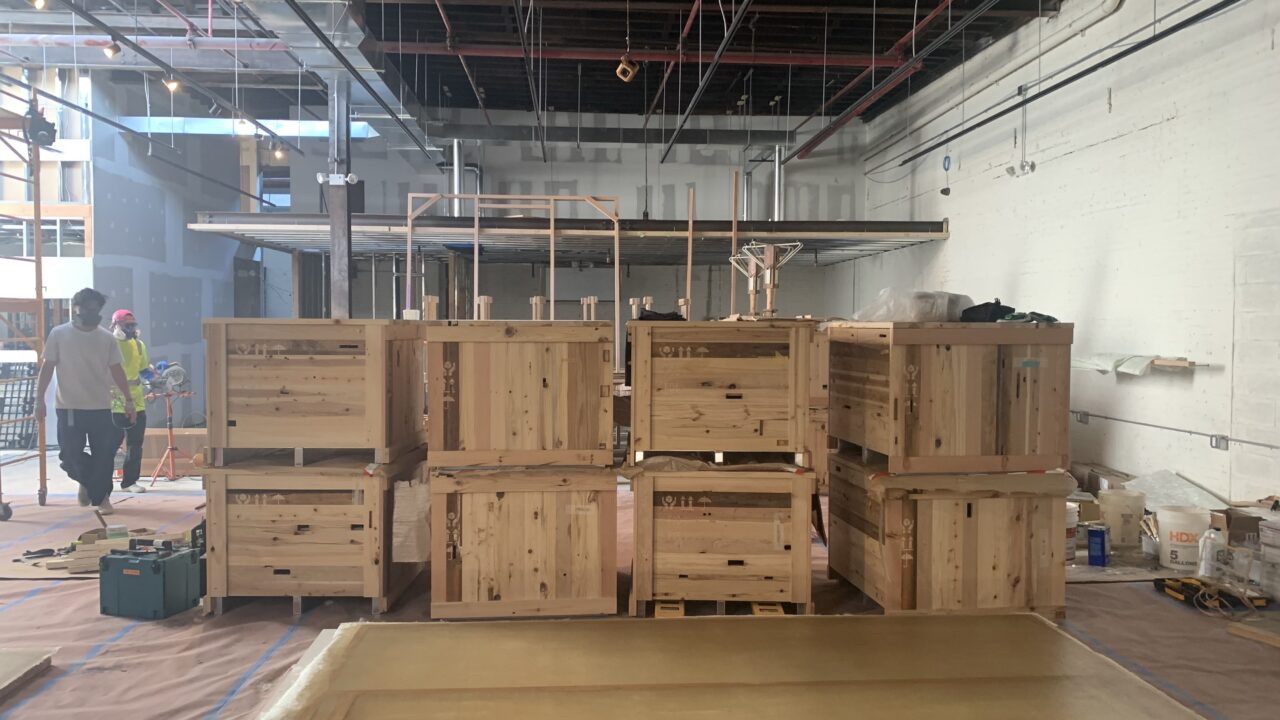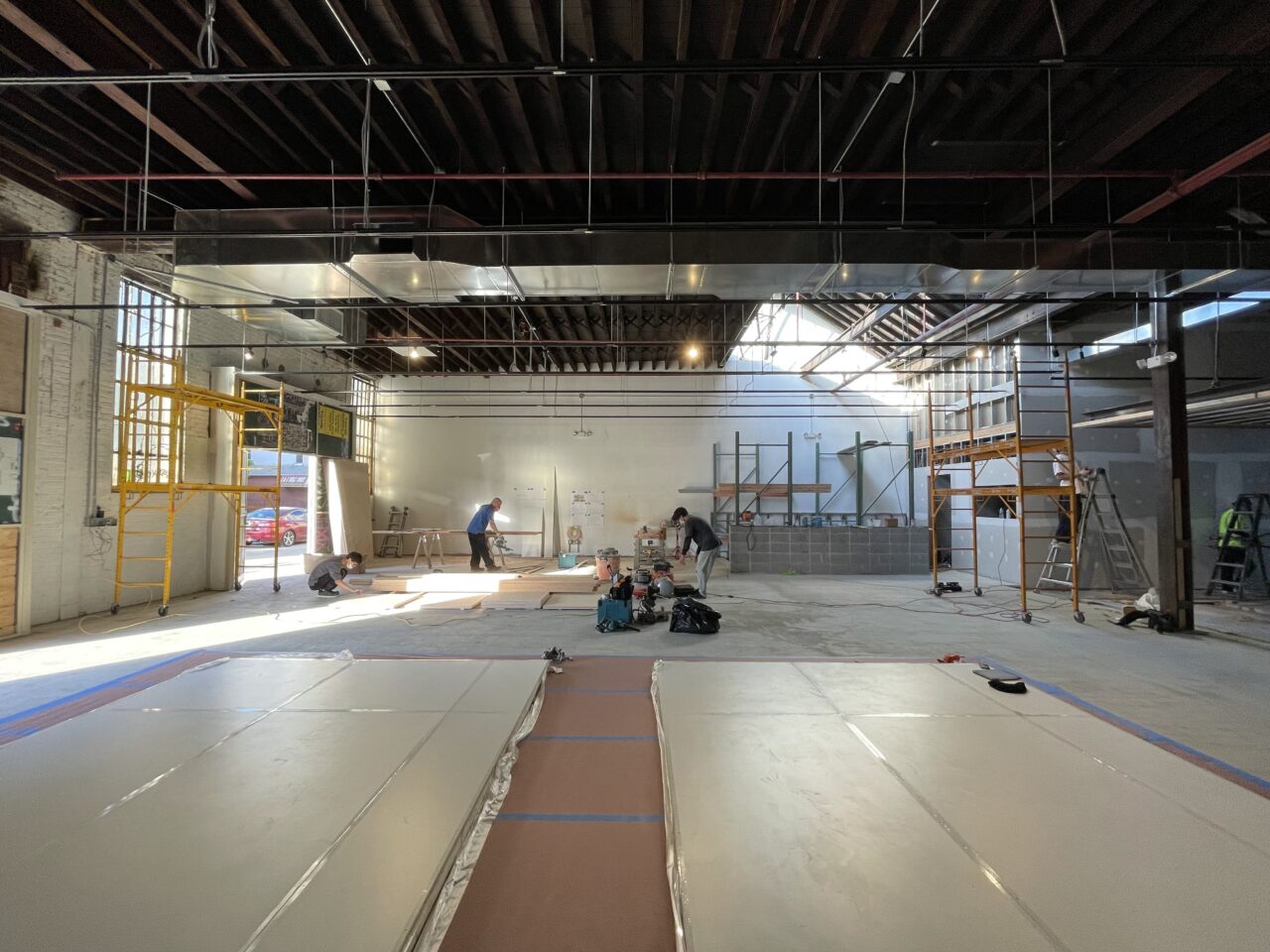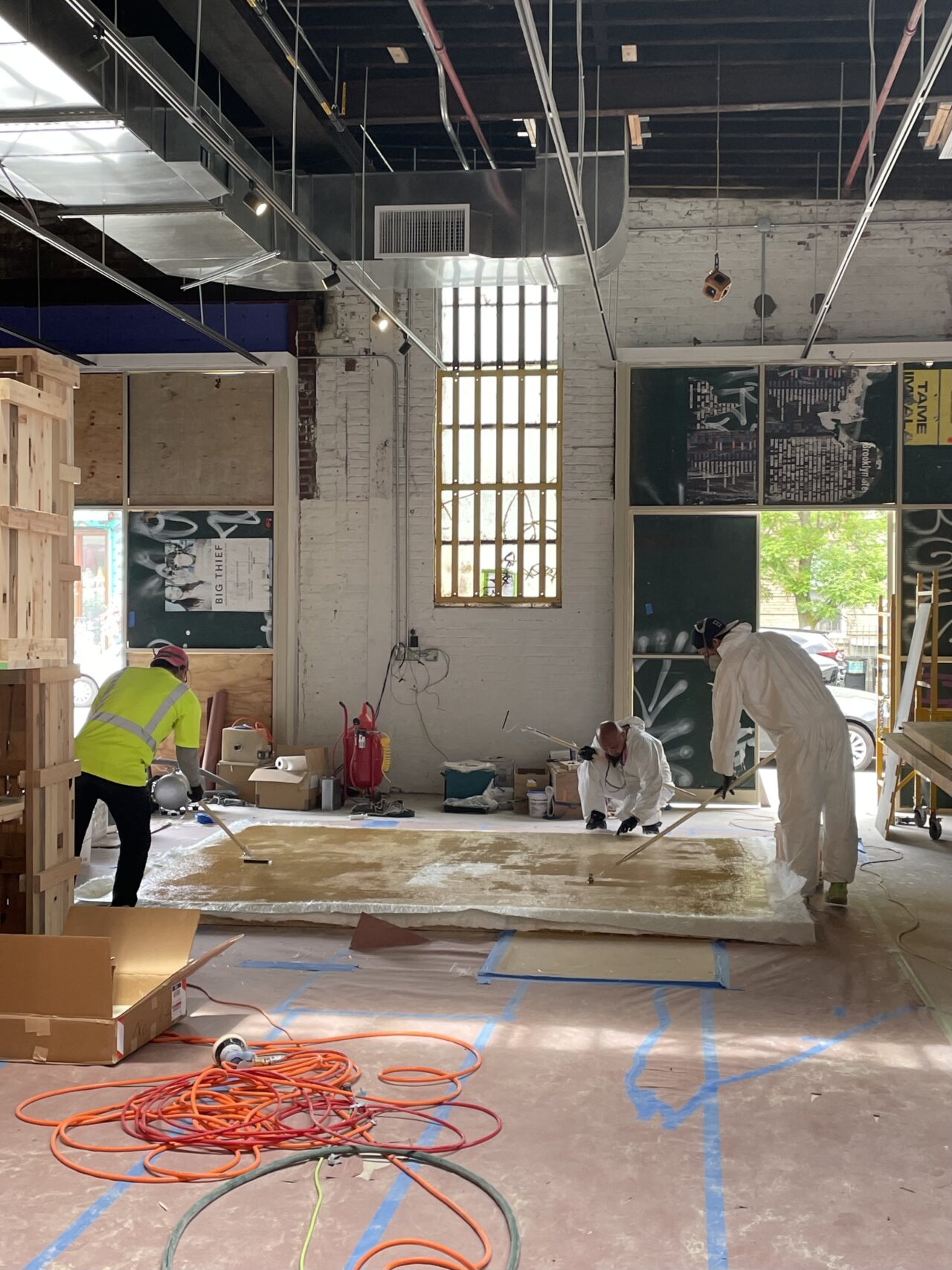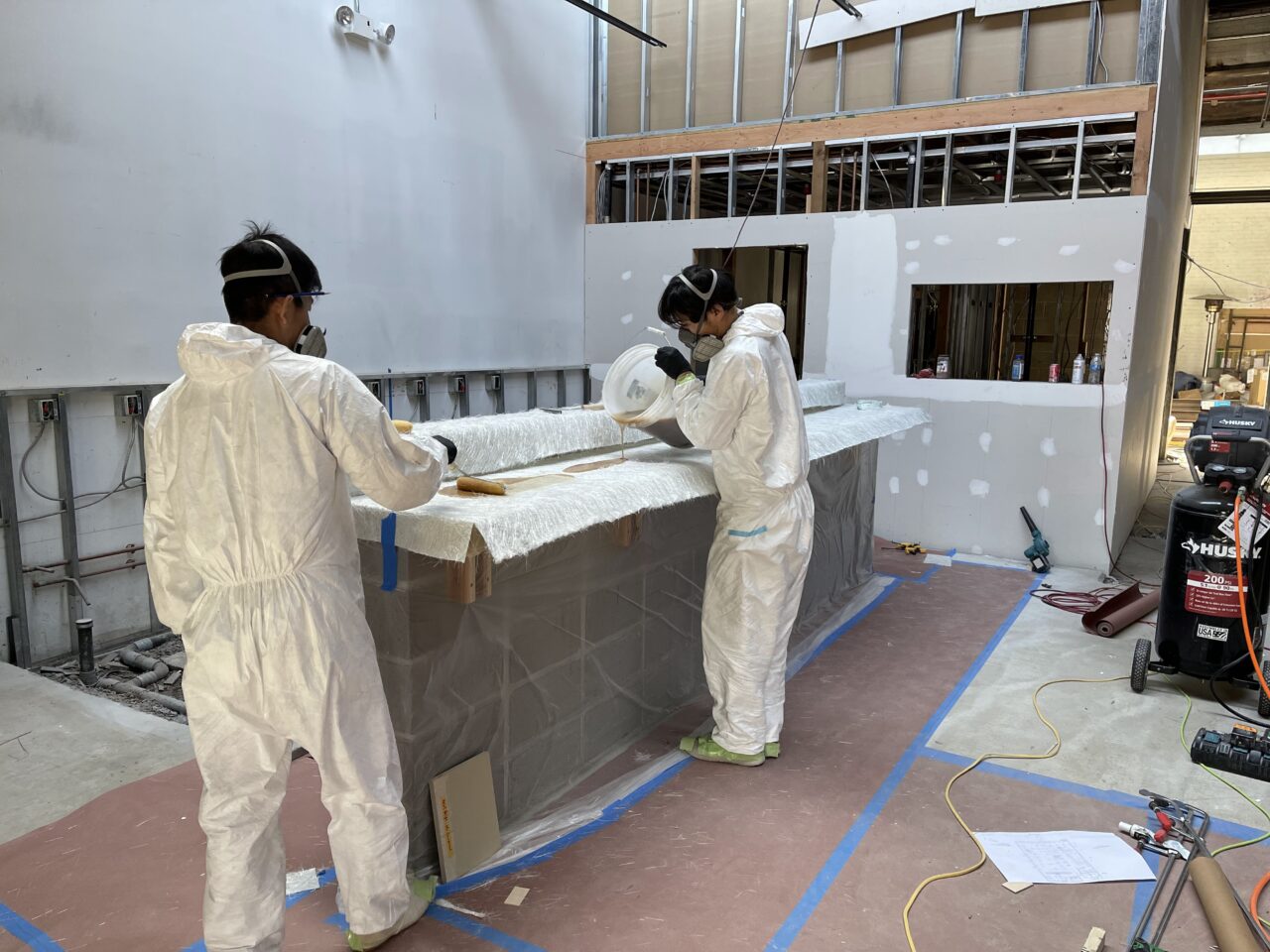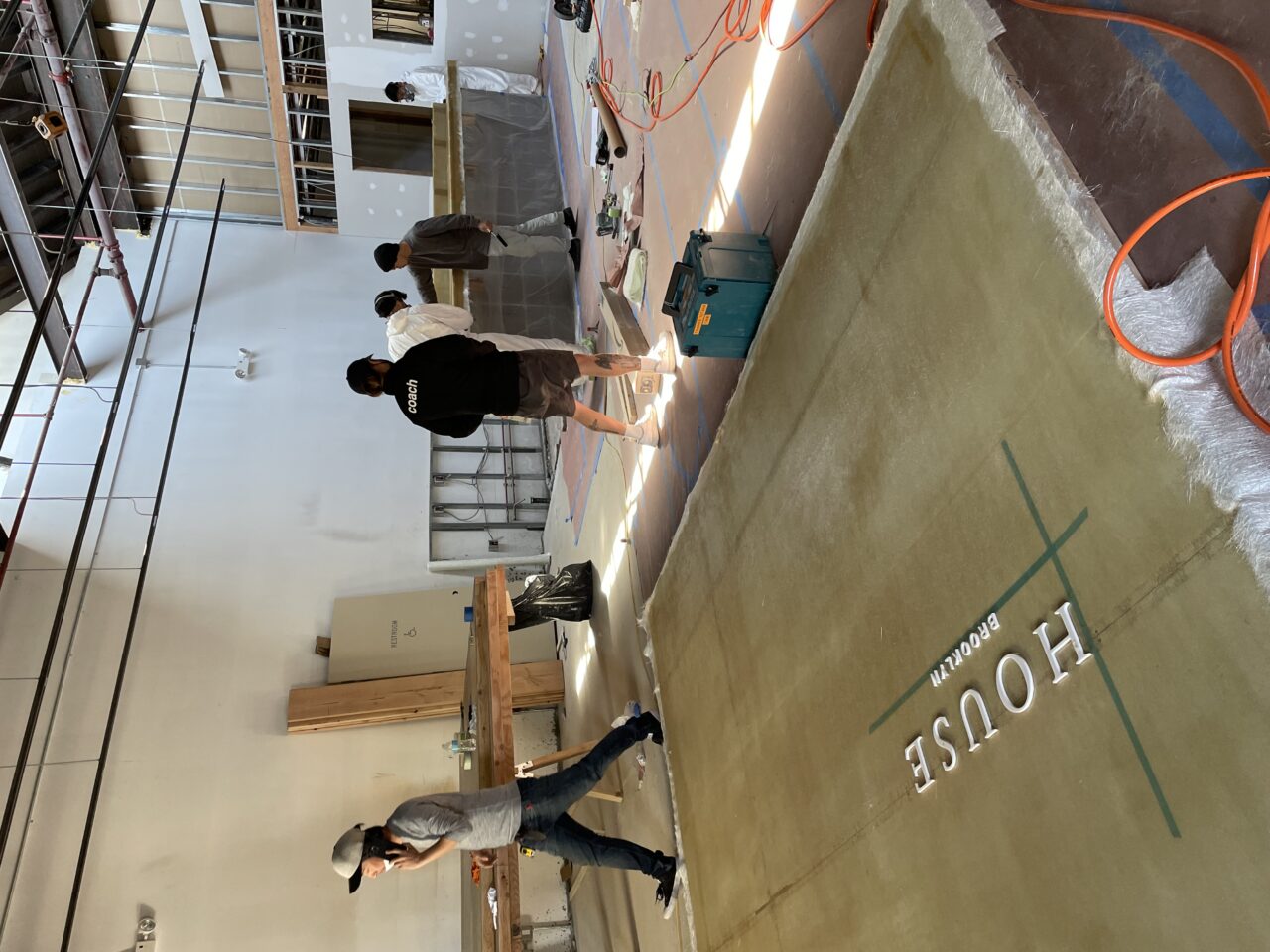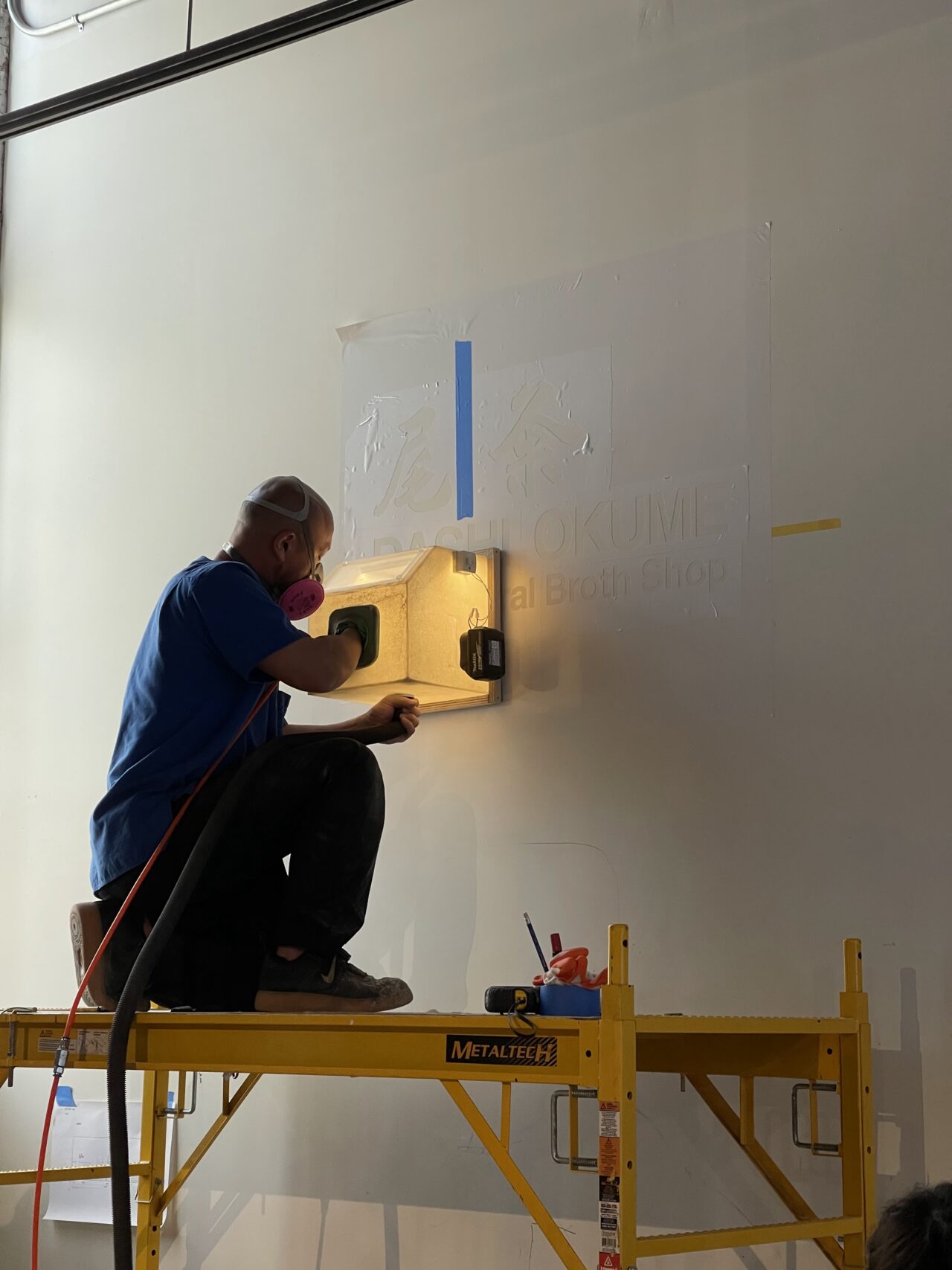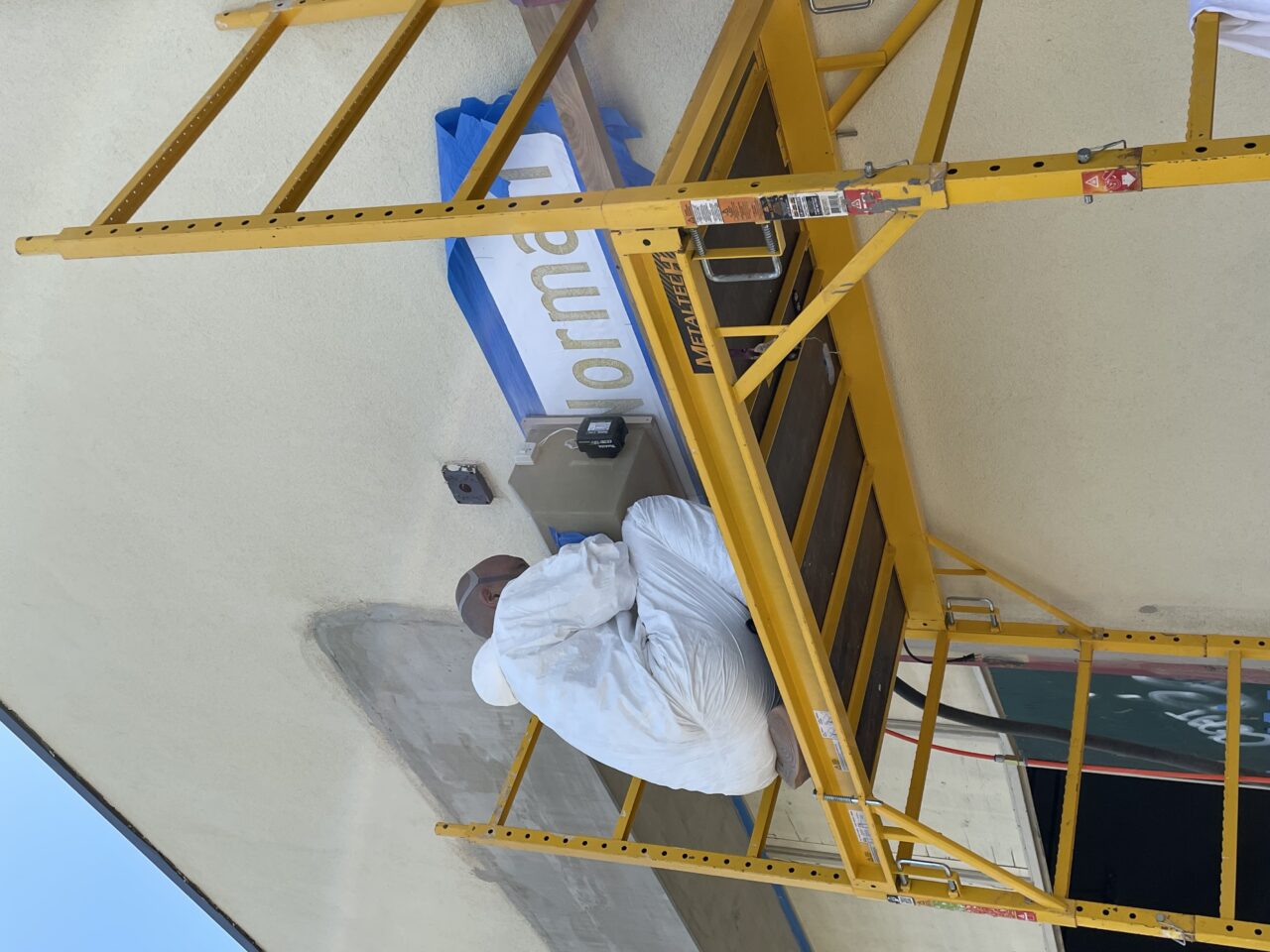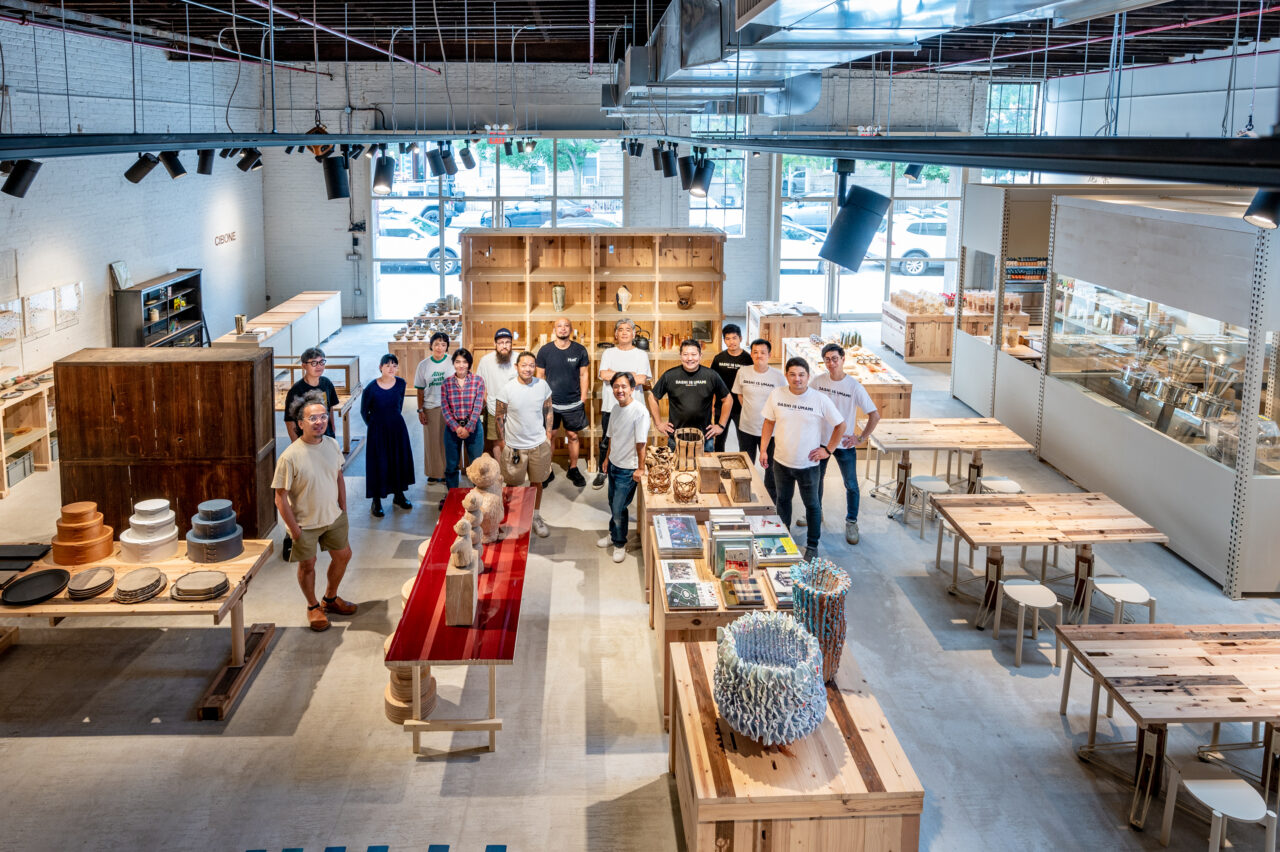50Normanという複合店をNYブルックリンにある50 Norman Aveに計画した。そこにジャパニーズフレンチの「HOUSE BROOKLYN」と、日本の陶器をはじめとする料理道具をそろえた「CIBONE」、明治四年創業の築地魚河岸「尾粂(おくめ)」による日本の食をテーマにした複合店である。
アウェイな土地でホームでのクオリティをキープしながらお店をつくることを試みた。長らく海外のプロジェクトで、日本でできていることが、思う通りにできず苦しんでいた。一度は日本でのクオリティを求めるのではなく、もっと大味でどこでも通用するわかりやすいデザインを試みないとならないとも考えた。その一方、デザインを土地に合わせるのではなく、あくまで日本でできているクオリティを守る方法はないかと考えた。そのために制作方法を考えてコストを抑えてクオリティ維持する方法はないかと考えた。そこで生まれたのがDEKASEGIだ。DEKASEGIとは日本において解体され捨てられる材料を日本で加工し、できるだけ体積を落として船ではこび、さらに数名の職人を連れてその組み立てと現地での加工を短期間で行う。更に日本の古材には仕口、継手の加工や経年変化がところどころに残っており、他ではえがたい表情がある。それを生かしたデザインを考えることをおこなっている。
これはDEKASEGIの第一弾プロジェクトで、コロナど真ん中で計画が始まり、その間でいろいろ状況が変わっていった。その一つはシッピング期間がどんどん長くなった。最初3ヶ月で見ていた期間が4ヶ月、5ヶ月と伸びていき、しまいには全く約束できない状態になった。さらに、それに合わせ費用も高騰していった。そのため、クレートを作ってその中に高密度に部材を入れ、体積をなるべく減らしてエアで送ることを考えた。このとき、クレート自体もお店の展示台として利用すること、そして面材は現地調達と TANK による製作が可能でありながらアメリカのスケールに合わせられる FRP という樹脂を使うことを思いついた。しかし、その方針で日本における製作が始まった頃、エアのシッピングコストも高騰しはじめた。そこで総体積をコンパクトにすれば良いということではなく、限られた飛行機内のスペースに無駄なく差し込めるよう、部材を小ぶりかつバラバラにすることがコストを下げる方法となり、あえなくクレートでの輸送は諦めることになったのだが、その時点で計画を変更できず、クレート自体も分解し隙間に差し込んでバラバラにして運んだ。
テキスト_長坂常 / スキーマ建築計画
We designed a retail complex called “50 Norman” on Norman Ave, Brooklyn, NY. It is a Japanese food-themed retail complex consisting of “HOUSE BROOKLYN,” a Japanese French restaurant, “CIBONE,” featuring Japanese ceramics and other cooking utensils, and “Okume,” a seafood processing store established in 1871 on the Tsukiji fish market.
For us, this overseas store project was an away game, but we sought to uphold the quality of a home game. We had struggled to achieve what we could in Japan with our overseas projects for a long time without much success. We, at one time, thought of attempting a more simplified, easy-to-understand design that would work anywhere rather than pursuing a Japanese quality. On the other hand, we looked for a way to maintain the quality we can achieve in Japan rather than adapting our design to the locality. For this reason, we had to think about production methods to minimize costs and maintain quality. Then, we came up with “DEKASEGI,” an idea to process materials that would otherwise be dismantled and discarded in Japan, reduce their volume as much as possible, ship them overboard, and then bring several craftsmen to the site to assemble and process them locally in a short time. Used and aged wood materials in Japan often retain their original craftsmanship, joints, and other features that give them a distinctive appearance. Our design sought to make the best use of such characteristics.
This complex was our first DEKASEGI project, and the planning began at the height of the COVID-19 crisis when many circumstances changed. One of the changes was that the shipping duration became longer and longer: what was supposed to be three months became four months, then five, and finally, unpredictable. The cost of transportation also skyrocketed accordingly. Therefore, we decided to send them by air using as little volume as possible by building crates and packing the components tightly inside them. The idea was to use the crates as display stands for the stores and to use FRP, a resin that can be locally procured and manufactured by TANK’s artisan team yet can be adapted to the American scale. However, the air shipping cost began to soar when production began in Japan. Therefore, minimizing volume using the crate was no longer relevant. Instead, we decided to break up the components into smaller pieces and insert them into the limited space in the airplane without wasting any space. But at that point, we could no longer change our original design, so we had to disassemble the crates and insert the pieces into the gap for transportation.
TEXT_Jo Nagasaka / Schemata Architects
<DATA>
Architect_Jo Nagasaka / Schemata Architects
Construction_TANK, BLANK Design (Local Architect)
Collaboration_village®︎ (Signage), WHITELIGHT. Ltd (Sound plan), ModuleX Inc. (Lighting plan)
Location_50 Norman Ave, Brooklyn, NY, 11222
Photography_GION, Schemata Architects / 50 Norman team
2022. 09
